
Creating good grooming habits and routines for your dog at home is essential for several reasons and you don’t have to be a professional dog groomer to do it right. By doing regular grooming at home, you can help your dog look its best between visits to the groomer.
You also get to bond more closely and build stronger trust with your dog. Routine grooming sessions will keep your dog clean and feeling fresh, but it will also allow you to inspect your dog’s skin, ears, nails, and teeth, and look for anything out of the ordinary.
Here are the most essential steps for maintenance grooming. Follow this information for grooming and you will be your dog’s own professional groomer.
Table of Contents
Brushing your Dog’s Coat
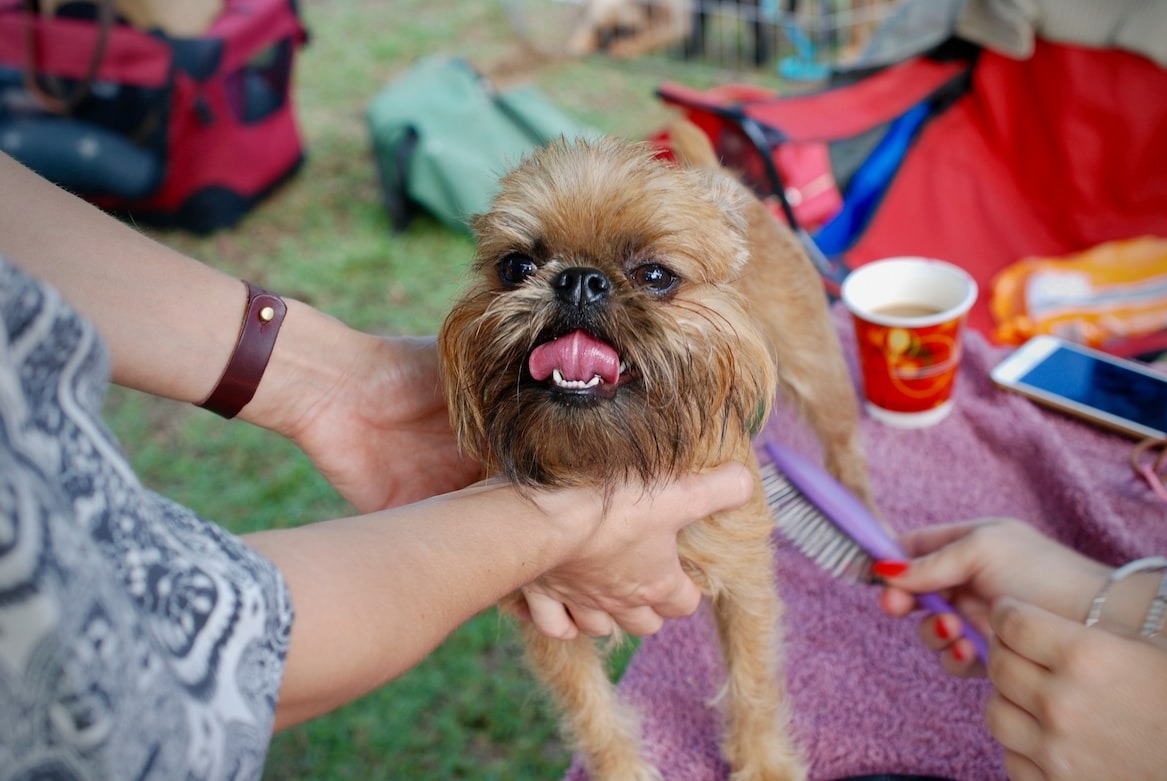
Brushing your dog’s coat is one of the grooming steps you will have to do more often. Brushing sessions are very beneficial for your dog, and the more often you do them, the better it is for your dog. Brushing not only helps in keeping your dog’s hair shiny and smooth, but also helps in removing dirt, debris, and dandruff from the fur all while stimulating your dog’s blood circulation.
The best way to ensure that brushing your dog’s coat is an enjoyable activity for both you and your fur baby, is to begin grooming when your dog is still a puppy. Show your puppy the brush or comb you will use for brushing and allow it time to sniff and inspect it thoroughly. Once your puppy becomes comfortable with the grooming tools, gently brush his coat and reward him with a delicious treat.
The first thing you need to do before taking on this grooming step is to identify what grooming tools are needed for the job. Dogs have different types of hair/fur, different lengths of coat, double coats, or single coats, and there are no grooming tools that work for all of them. We recommend you use a bristle brush for shorter or medium-length hair and a pin brush for longer hair. We also recommend you have a slicker brush on hand to help with de-tangling and de-matting.
Mats and tangles are common and unless they cover your dog’s entire body, they are not cause for concern. Even with brushing, mats can form in places that are sometimes difficult to reach. They are most often found behind a dog’s ears, between its paw pads, and on the dog’s legs. It is recommended to de-mat them using a slicker brush. Mats can cause discomfort and even pain, so they should be dealt with as soon as they form.
The frequency of brushing your dog’s coat depends on a few factors as well. What type of hair your dog has and how much it sheds play a big factor in determining how often brushing is required. For example, if you have a Husky or a Golden Retriever, brushing becomes a daily affair. Both Huskies and Golden Retrievers tend to shed a bit and require thorough daily brushing to get rid of excess hair. If your fur baby is a Cavapoo, Maltese, or Poodle, brushing is less demanding as these dogs don’t shed. A shedding dog should be brushed once or even twice every day while a non-shedding dog can go as much as one week between brushes.
Giving Your Dog a Bath at Home
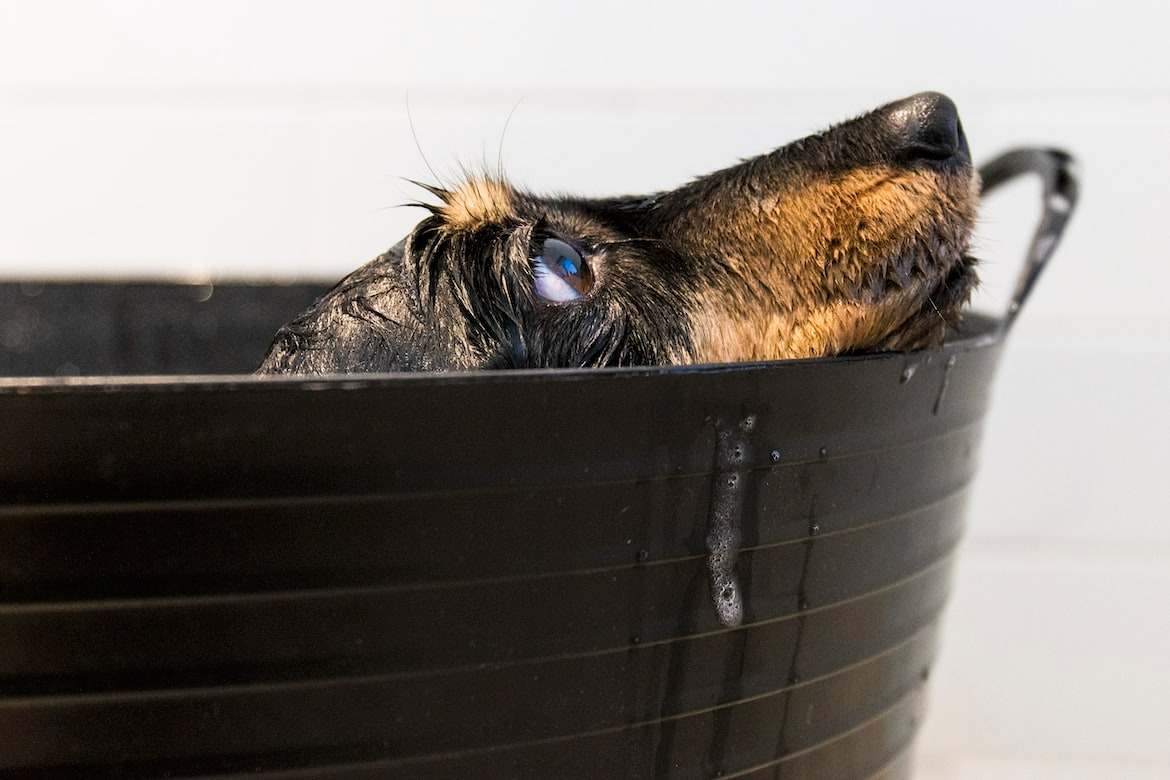
Baths are just as important as brushing, and just like brushing, you don’t have to be trained in grooming to be able to do a great job. Most dog breeds require a bath every month, but there are some that can do without for two or more months. German Shepherds, the Bernese Mountain Dog, and other large dog breeds can be bathed as little as twice a year, while small dog breeds like the Mini Bernedoodle, Pomeranian, and Golden Doodle mini should be bathed once every 4 to 6 weeks.
It's important to speak with your veterinarian or puppy breeder and learn how often your dog or puppy can be bathed safely. Too much bathing can be harmful and so can too little. Dogs have natural oils that protect their skin as well as their coats and bathing them too often can lead to ridding them of their beneficial natural oils and subsequently to dry skin and rashes. Bathing them too rarely can also cause problems. Debris can get stuck on their fur, dirt and allergens can affect their skin, and infections can arise on unwashed skin, so it is essential to first learn how often you should bathe your dog at home and keep to that routine.
When bathing your dog, the first thing you will need is to find the appropriate shampoo for your dog. There are plenty of dog-friendly shampoos available – you can find dog shampoo for curly hair, dog shampoo for white dog breeds, mild dog shampoo, and even dog shampoo for large or small dogs. This is also something you can ask your dog breeder or veterinarian to recommend. Once you identify what type of shampoo is right for your dog, you can move on to preparing your dog for a bath.
Before you bathe your dog, it is recommended to brush its coat thoroughly to remove any loose hair and debris and put cotton balls in your dog’s ears to prevent water from entering. Preparing the right water temperature is also essential as dogs can be sensitive to both hot and cold water. Lukewarm water on low-pressure will work best, especially if you have a smaller dog breed. When you begin washing your dog, make sure to wash from the neck down and never apply water with pressure on your dog’s head or face. Apply shampoo, also from the neck back, to your dog’s entire body and massage it thoroughly. You can then rinse off the shampoo and give your dog a little bit of space to shake off any excess water. For drying, it is recommended to use a towel to absorb as much water as possible and either allow your dog to dry off naturally the rest of the way or help him with a hair dryer. The actual bathing process should take no more than 10 minutes.
Clipping your Dog’s Nails
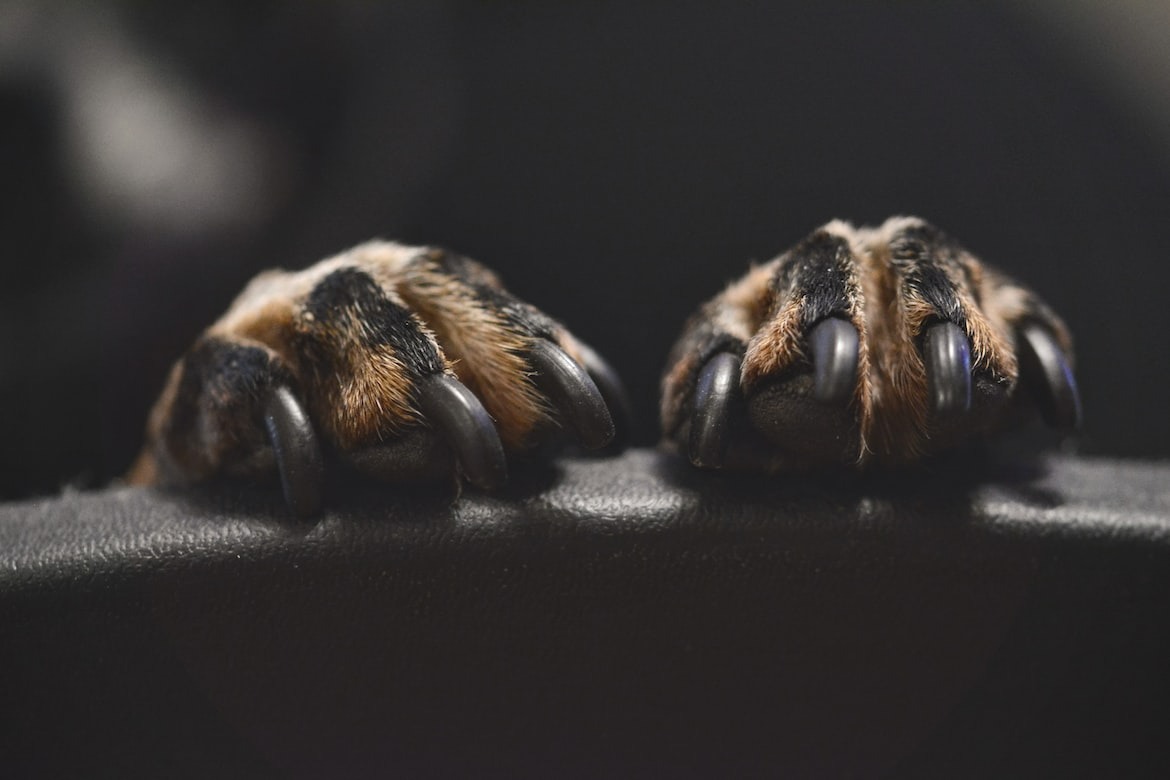
Clipping your dog’s nails is a very important grooming step, but not all dogs need it. Bigger dog breeds and active dog breeds are on the move enough to file down their nails naturally. Smaller dogs on the other hand, like the beautiful and sometimes lazy French Bulldogs or Pugs, might not get enough exercise in to trim their nails on their own.
Overgrown nails can be problematic in several ways. Not only do they cause discomfort, but they can also cause damage to the nail bed and cause pain due to breakage. Infections are also possible when overgrown nails damage the nail bed. Longer nails can also interfere with your dog’s natural movement and even get caught in fabric, fences, and so on, causing your dog to injure itself.
Clipping your dog’s nails might sound like something you would rather not do, but it is not something to be anxious about or do with fear. All you need for this grooming step is a pair of nail clippers specifically designed for dogs. You only need to clip the end/tip of the nail, or the nail hook as some refer to it. If your dog has white nails, you can check to see where the blood vessels begin. It will help you know how far you can clip without risk.
It always helps to begin this process, as with any dog grooming process, when your puppy is still very young. You can clip one nail every now and then when your puppy is relaxing and reward its lack of reaction with a delicious treat and praise. You can repeat this process and clip one nail every day until your puppy becomes comfortable with sitting still and allowing you to do the work.
Cleaning your Dog’s Ears
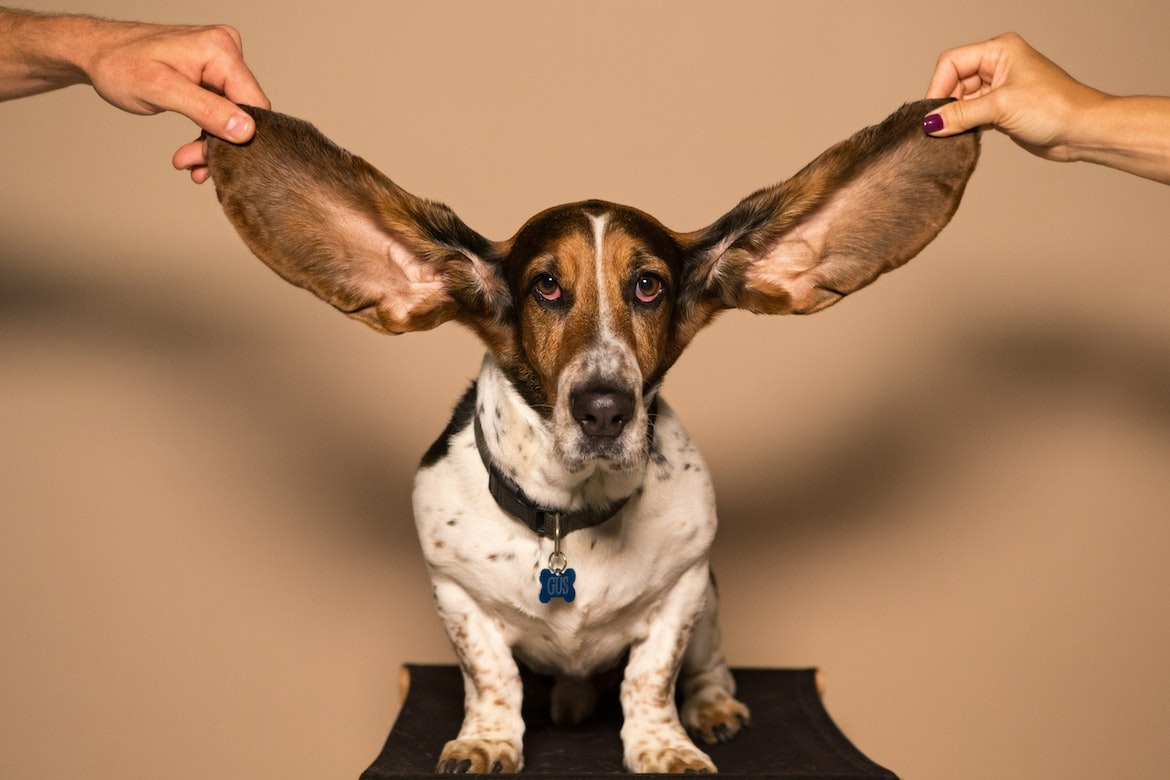
Although this is not something you need to do on a daily basis, cleaning your dog’s ears is still an essential part of the grooming department. Dogs can develop ear infections quite easily, especially after a summer swim or a particularly fun play date with a puddle.
Cleaning your dog’s ears at home can be done every week or so. You will need a damp cloth or a cotton swab for this procedure. You only need to clean the outer part of your dog’s ear without inserting the cloth or swab into the ear canal and make sure that your dog’s ears are always protected from moisture. Ideally, you should put cotton balls in your dog’s ears before every bath whether it’s at home or at the beach. Excess hair that comes out of your dog’s ears should also be plucked at the recommendation of your veterinarian.
If you find that your dog’s ears have a bad odor or signs of a yellow or brown discharge, it most likely means that your dog has developed an ear infection and should see a veterinarian for ear drops, professional ear cleaning, and other forms of treatment.
Cleaning Your Dog’s Eyes
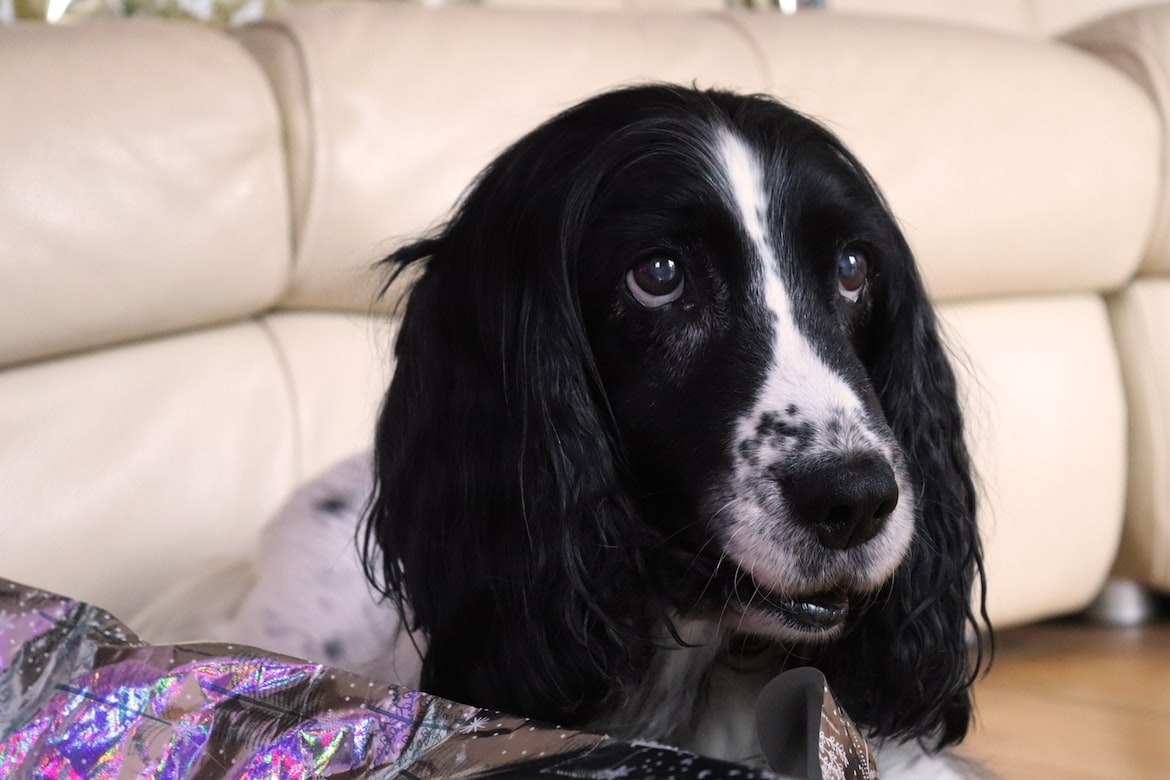
Dogs like the Bichon Frise puppy, white Pomeranian puppy, and other white dog breeds are generally prone to tear stains. Although tear stains are most visible and most common in white dogs, other dog breeds can have them too. Regardless, they all need to have their beautiful faces cleaned. Cleaning your dog’s eyes doesn’t involve effort or grooming tools. All you need is a damp cloth, a moist cotton ball, or a dog wet wipe. Use a damp cloth or cotton ball to gently wipe the stains under your dog’s eyes. You can do this every day for the best results.
If your dog has a lot of hair around its eyes, that might interfere with its sight, it is best to clip it. For this you will need scissors that are specifically designed for dogs. Make sure to only do this when your dog is relaxed and still and try to avoid bringing sharp objects near your dog’s eyes when he or she is agitated.
Do not use human eye drops to treat any eye problems your dog may have. Always look to your local veterinarian for help and guidance on what approved products to use.
Brushing your Dog’s Teeth
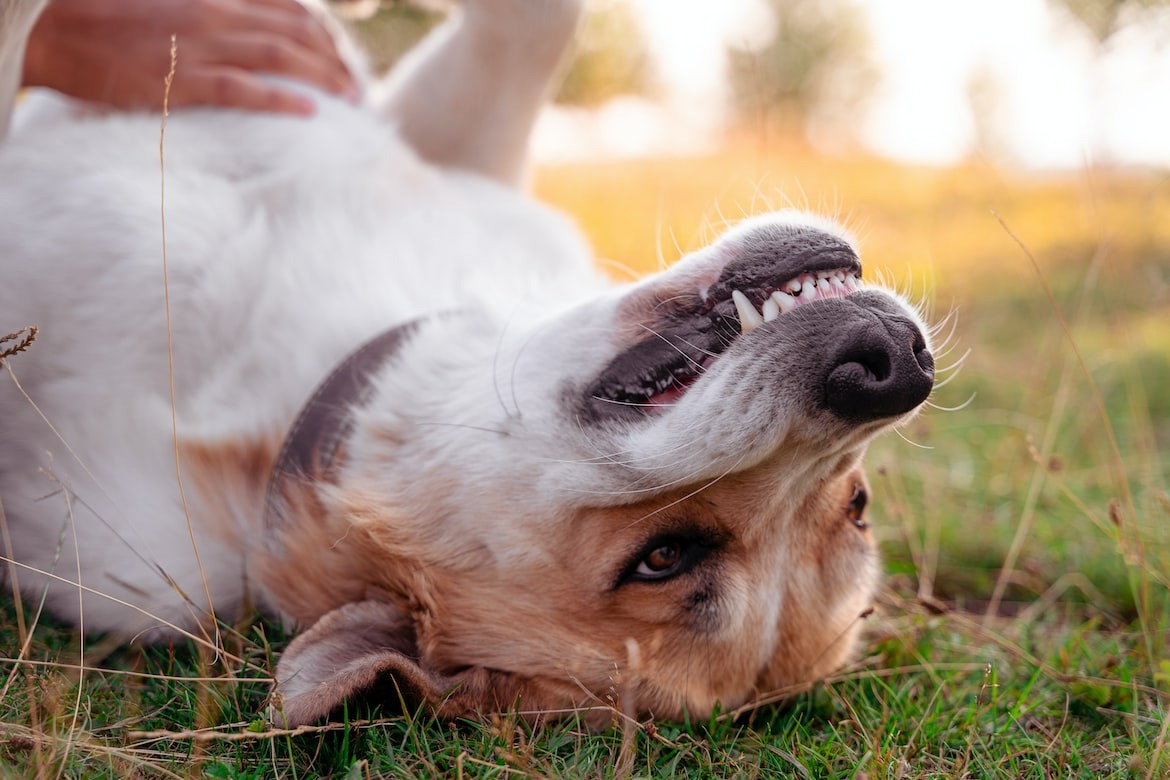
Brushing your dog’s teeth is possibly one of the most essential steps in home grooming and maintenance grooming. Dogs' oral hygiene is as important as everything else and dogs too can be prone to various dental issues (which most dogs are). Periodontal disease is a very common issue with most dog breeds – big and small. Brushing prevents tartar buildup, dental decay, gum issues, and much more.
Before you brush your dog’s teeth, make sure to first introduce your dog to the toothpaste and toothbrush that you plan on using. You can apply a bit of toothpaste on your finger and allow your dog to sniff and taste it. This process will present the best results if you begin in early puppyhood. Teaching an adult dog to sit still while you brush its teeth is much more difficult than teaching a young puppy. Once your puppy has tasted the toothpaste, you can use your finger with a bit more toothpaste on it to gently brush its teeth and gum. Only after your puppy gets used to this process, can you then move on to using the toothbrush instead of your finger.
It is crucial that you only use vet-approved toothpaste and toothbrushes for dogs. Human toothpaste contains chemicals that can poison your dog. Dental sticks and chew toys will also help with your dog’s dental hygiene.
Grooming Tips
- When grooming your dog at home, always use treats and toys to reward good behavior
- Avoid clipping your dog’s nails when he/she is agitated
- Approach grooming with calmness and patience
- Do not punish or yell at your dog to sit still. This will agitate your dog even more and pose difficulties in later grooming sessions
- Do not resort to methods of forcefully immobilizing your dog to cut its hair or trim its nails. Your dog might react negatively while trying to protect itself
- If you can, brush your dog’s coat every day
- Always do research beforehand to find the right grooming tools needed to groom your dog
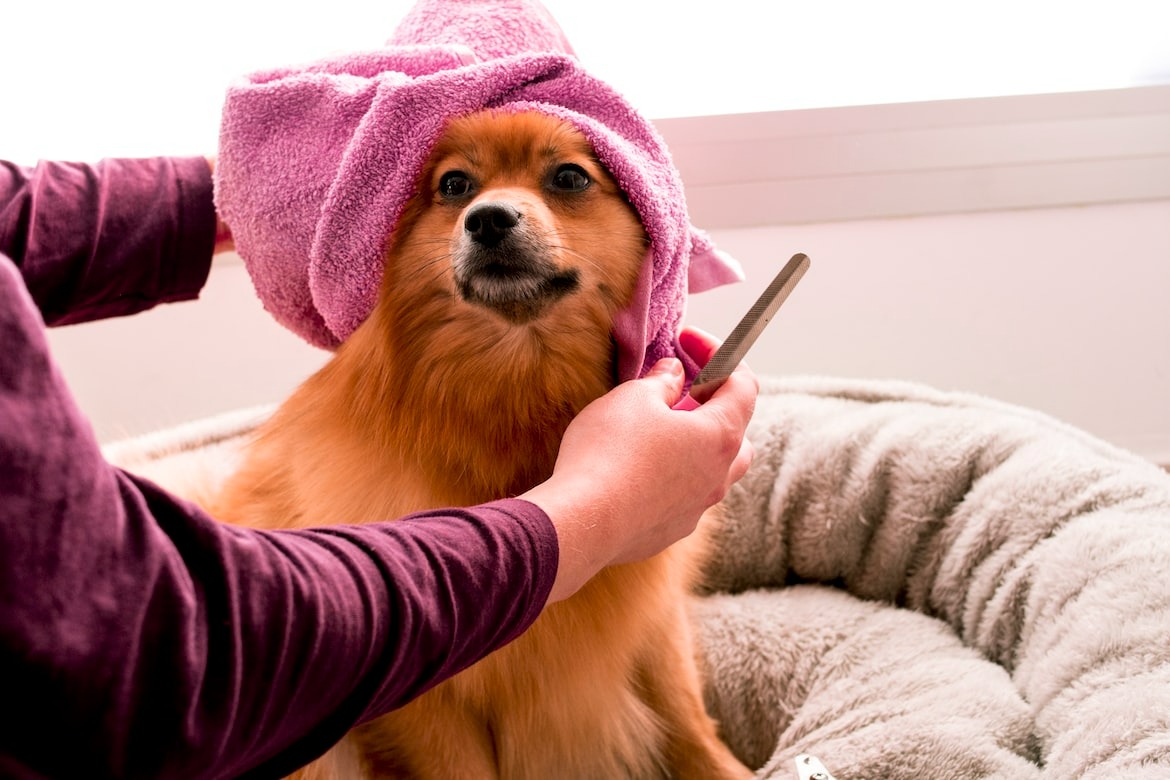 What Professional Dog Groomers Advise
What Professional Dog Groomers Advise
- Try not to force your dog into compliance. If your dog reacts negatively (tries to bite) to your attempts at grooming – brushing, bathing, etc. It is best to seek further assistance from someone trained in pet grooming.
- If you want dog home grooming to be successful, begin all the grooming steps when you bring your young puppy home
- Dog haircuts and clips should be done after receiving training in grooming from a professional dog care specialist
- Groom your dog periodically without skipping any of the essential grooming steps
- When bathing your dog, avoid using human products like human shampoo, conditioner, soap, or perfume. These products contain chemicals that are harmful for dogs. Only use vet-approved products when grooming your dog at home
Scroll down to see FAQs about dog grooming at home!
What To Read Next
20 Best Dogs for Kids
Love in Time for Christmas
Frequently Asked Questions
What supplies do I need to groom my dog at home? To groom your dog at home, you'll need a few essential supplies. These include a good quality dog brush appropriate for your dog's fur type, dog-specific shampoo and conditioner, a pair of dog grooming scissors for trimming, a nail clipper or grinder, a toothbrush and dog-formulated toothpaste, and towels. You might also consider a grooming table, especially for smaller dogs.
How often should I groom my dog at home? The frequency of grooming depends on your dog's breed, size, and coat type. In general, most dogs should be groomed every 4-6 weeks, but this could vary. For example, long-haired breeds or dogs with curly or wiry coats may require more frequent grooming. Brushing, however, should be done more frequently, at least once a week, and more often for long-haired breeds.
How can I calm my dog down for grooming? Start by making sure your dog is familiar with the grooming tools you'll be using. Let them sniff and explore these items. You can also try to associate grooming with positive experiences, like treats or praise. Make sure to be patient and gentle during the grooming process and try to groom your dog when they're already in a relaxed state.
How do I trim my dog's nails without hurting them? Start by identifying the quick of the nail, which is the sensitive part where blood vessels and nerves are located. In clear nails, it's the pink part, while in darker nails, it's harder to identify. Trim only the tip of the nail, avoiding the quick. If you're unsure or uncomfortable doing this, consider using a grinder or seeking help from a professional groomer or vet.
Can I use human shampoo on my dog? No, it's not recommended to use human shampoo on your dog. Dogs have a different skin pH level than humans, and human shampoo can disrupt their skin's acid mantle, leading to dryness, irritation, and potential skin infections. Always use a dog-specific shampoo when grooming your dog at home.



